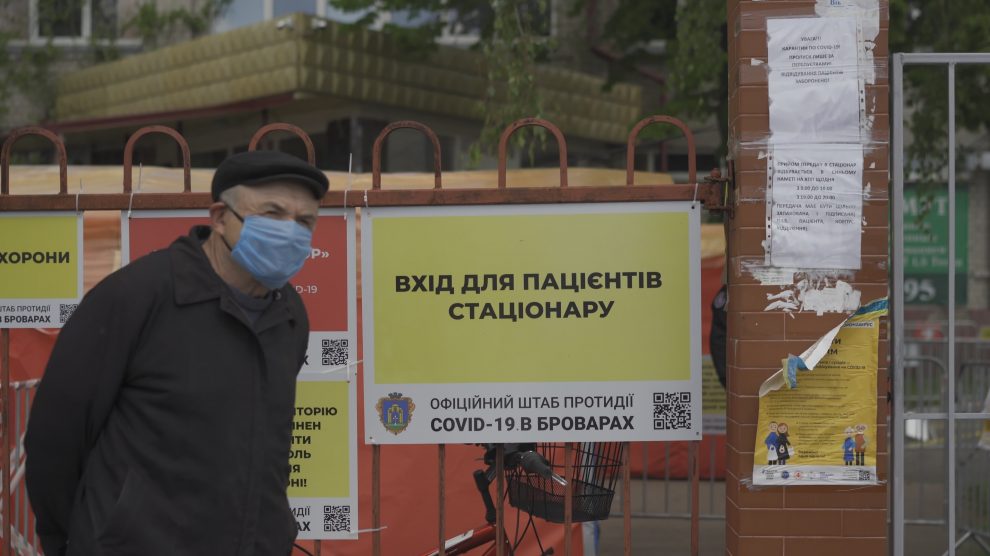Ukraine is using a new tool, developed with the World Health Organisation, to gauge the impact of Covid-19 prevention measures across various regions.
A new monitoring tool, developed by the World Health Organisation (WHO) and the Public Health Centre of Ukraine (UPHC), is revealing how the different regions in Ukraine responded to Covid-19.
Launched in October 2020, the Public Health Response Monitor (PHRM) was developed based on a regional tool, WHO/Europe’s Health System Response Monitor (HSRM).
The PHRM allows Ukraine to systematically monitor the policies and epidemiological situation across the different regions of the country. Using the findings, national and regional authorities can adjust the country’s Covid-19 response.
“We welcome tools that facilitate coordination and help us to respond effectively to the virus,” said Ukraine’s Deputy Minister of Health Viktor Liashko, who added, “We are discovering the opportunities of regional monitoring, which we will consider integrating into the daily work of emergency coordination centres to support our public health response”.
Providing insights into new outbreaks
Several rounds of data collection began in the regions in May 2020. The WHO Representative in Ukraine, Dr Jarno Habicht, highlights the importance of this information in helping national and regional authorities to coordinate health-related interventions, policies and messages to support Ukraine’s Covid-19 response.
“The tool could also be a useful resource to help investigate a new outbreak in a given region,” he says, “illustrating, for instance, how relaxing public health measures and allowing people to congregate, results in high infection rates in subsequent weeks.”
Emergency coordination centres at the ministry of health and the UPHC can also use the tool to compare governance and financing arrangements by region, and see whether these differ from national standards and policies.
Regional capacity and leadership
The PHRM consists of a questionnaire with six blocks of questions covering areas including regional management and coordination, funding, planning of services, case management and supporting essential health services during the pandemic. Public health data is supplemented with data on the epidemiological situation in each specific region.
The findings so far show a considerable variation in the implementation of Covid-19 measures in the regions of Ukraine, reflecting regional capacity and leadership. The next step will be a detailed study of the measures taken by the regional authorities in critical areas, such as school reopening and ensuring access to basic medical services.
The tool facilitates in-depth analysis of public health information alongside epidemiological data. It builds on a joint initiative between WHO/Europe, the European Commission, the European Observatory on Health Systems and Policies and the HSRM.
Ukraine reported more than 11,000 new cases of Covid-19 on December 16, bringing the total number of positive tests to over 930,000 since the beginning of the outbreak in the spring.
Mayor of second-largest city dies
Gennadiy Kernes, the mayor of Ukraine’s second-largest city, died this week from complications related to Covid-19, including kidney failure. Mr Kernes had been treated at Berlin’s Charité clinic since September. In October, he was re-elected mayor of Kharkiv, a post he has held since 2010. The 61-year-old was paralysed from the waist down in April 2014 after being shot while jogging by an unknown sniper.
President Volodymyr Zelensky and several other other top Ukrainian officials have recovered from Covid-19.
There has been a significant decrease in new cases of Covid-19 in Ukraine since the end of November, however. The country’s highest single-day increase came on November 28, when more than 16,500 people tested positive.
“We are trying to do everything so that the first doses be available in Ukraine in February,” said Mr Stepanov.
According to the minister, the health ministry has already discussed a strategy for storing coronavirus vaccines with several Ukrainian industrial enterprises that have refrigeration facilities, as some of vaccines, such as the Pfizer vaccine, must be stored at the ultra-cold temperature of – 80°C.
“We will be able to store about one million doses,” Stepanov said, who added that medical workers, military personnel, and teachers were likely to receive the vaccine first.
—
Unlike many news and information platforms, Emerging Europe is free to read, and always will be. There is no paywall here. We are independent, not affiliated with nor representing any political party or business organisation. We want the very best for emerging Europe, nothing more, nothing less. Your support will help us continue to spread the word about this amazing region.
You can contribute here. Thank you.




Add Comment